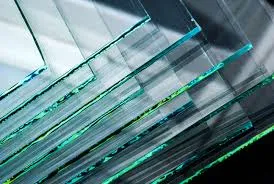The Benefits and Applications of Low-E Reflective Glass
Low-E reflective glass, short for low-emissivity reflective glass, has emerged as a significant innovation in the field of glazing materials. This specialized glass is designed to enhance energy efficiency in buildings while providing aesthetic appeal. By incorporating a microscopically thin coating of metal oxide, Low-E glass effectively reflects infrared light while allowing visible light to pass through, making it a valuable asset in modern architecture.
The Benefits and Applications of Low-E Reflective Glass
Moreover, Low-E reflective glass plays a crucial role in maintaining indoor comfort. By regulating indoor temperatures more effectively, it contributes to a stable environment. This is particularly beneficial in climates with extreme temperature variations. Homeowners and commercial buildings can enjoy increased comfort without the constant fluctuations associated with standard glass.
low e reflective glass
In addition to energy efficiency, Low-E reflective glass offers excellent protection against harmful ultraviolet (UV) rays. Prolonged exposure to UV radiation can cause fading and deterioration of interior furnishings, artwork, and flooring. Low-E glass minimizes UV penetration, safeguarding valuable possessions and extending their lifespan. This feature is especially important in museums, galleries, and residential settings where the preservation of aesthetics is paramount.
The aesthetic appeal of Low-E reflective glass cannot be overlooked. Available in various tints and finishes, this type of glass allows architects and designers to create visually striking facades while maintaining functionality. The reflective coating not only enhances the building's exterior appearance but also provides privacy, as it reduces visibility from the outside during the day. This dual advantage contributes to a sense of security for occupants.
Furthermore, the adoption of Low-E reflective glass aligns with modern sustainability goals. As energy efficiency becomes increasingly vital in the fight against climate change, integrating Low-E glass in new constructions and renovations supports green building practices. Many building codes and regulations are now encouraging or mandating the use of such efficient materials, making it a standard choice for environmentally conscious projects.
In conclusion, Low-E reflective glass represents a blend of functionality, aesthetics, and sustainability. Its ability to enhance energy efficiency, protect against UV rays, and contribute to visually appealing designs makes it an invaluable component of modern architecture. As the demand for eco-friendly building solutions continues to grow, Low-E reflective glass will undoubtedly play a pivotal role in shaping the future of construction and design.
 Afrikaans
Afrikaans  Albanian
Albanian  Amharic
Amharic  Arabic
Arabic  Armenian
Armenian  Azerbaijani
Azerbaijani  Basque
Basque  Belarusian
Belarusian  Bengali
Bengali  Bosnian
Bosnian  Bulgarian
Bulgarian  Catalan
Catalan  Cebuano
Cebuano  Corsican
Corsican  Croatian
Croatian  Czech
Czech  Danish
Danish  Dutch
Dutch  English
English  Esperanto
Esperanto  Estonian
Estonian  Finnish
Finnish  French
French  Frisian
Frisian  Galician
Galician  Georgian
Georgian  German
German  Greek
Greek  Gujarati
Gujarati  Haitian Creole
Haitian Creole  hausa
hausa  hawaiian
hawaiian  Hebrew
Hebrew  Hindi
Hindi  Miao
Miao  Hungarian
Hungarian  Icelandic
Icelandic  igbo
igbo  Indonesian
Indonesian  irish
irish  Italian
Italian  Japanese
Japanese  Javanese
Javanese  Kannada
Kannada  kazakh
kazakh  Khmer
Khmer  Rwandese
Rwandese  Korean
Korean  Kurdish
Kurdish  Kyrgyz
Kyrgyz  Lao
Lao  Latin
Latin  Latvian
Latvian  Lithuanian
Lithuanian  Luxembourgish
Luxembourgish  Macedonian
Macedonian  Malgashi
Malgashi  Malay
Malay  Malayalam
Malayalam  Maltese
Maltese  Maori
Maori  Marathi
Marathi  Mongolian
Mongolian  Myanmar
Myanmar  Nepali
Nepali  Norwegian
Norwegian  Norwegian
Norwegian  Occitan
Occitan  Pashto
Pashto  Persian
Persian  Polish
Polish  Portuguese
Portuguese  Punjabi
Punjabi  Romanian
Romanian  Russian
Russian  Samoan
Samoan  Scottish Gaelic
Scottish Gaelic  Serbian
Serbian  Sesotho
Sesotho  Shona
Shona  Sindhi
Sindhi  Sinhala
Sinhala  Slovak
Slovak  Slovenian
Slovenian  Somali
Somali  Spanish
Spanish  Sundanese
Sundanese  Swahili
Swahili  Swedish
Swedish  Tagalog
Tagalog  Tajik
Tajik  Tamil
Tamil  Tatar
Tatar  Telugu
Telugu  Thai
Thai  Turkish
Turkish  Turkmen
Turkmen  Ukrainian
Ukrainian  Urdu
Urdu  Uighur
Uighur  Uzbek
Uzbek  Vietnamese
Vietnamese  Welsh
Welsh  Bantu
Bantu  Yiddish
Yiddish  Yoruba
Yoruba  Zulu
Zulu 

